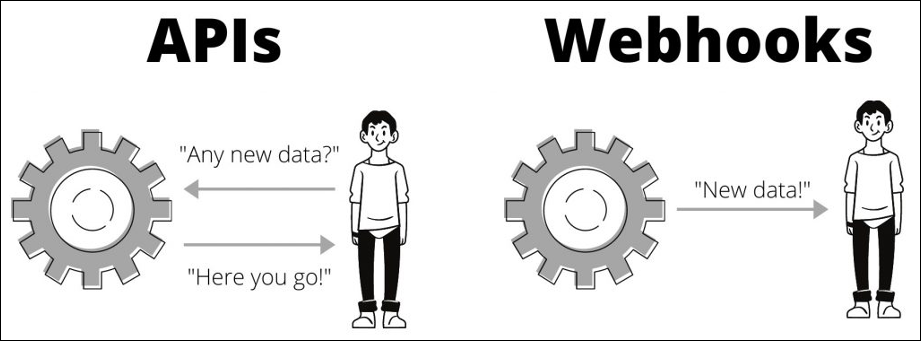Webhooks Overview
Start getting familiar with webhooks and how they compare to APIs.
You can configure webhooks to get real-time notifications as events happen across your Juniper Mist organization or within a particular Juniper Mist site.
You may know webhooks as user-defined HTTP callbacks, HTTP posts, or HTTP notifications. These notifications include event details that you can use in your own applications or third-party software.
As you begin working with webhooks, it can be helpful to compare them with APIs. APIs work on a pull or polling model. You create an API call, and Juniper Mist responds with the requested data. In contrast, webhooks work on a push model. After you configure a webhook, you receive data as events occur.
Org Webhooks enable real-time data from the organization to be pushed to a provided URL. To learn more, see Org Webhooks.
Site Webhooks enable real-time data from a specific site to be pushed to a provided URL. To learn more, see Site Webhooks.

| REST APIs | Webhooks | |
|---|---|---|
| Model | Pull or polling model | Push model |
| Limit | 5000 per organization per hour | No limit |
| Operations | Pull statistics, create configuration, update configuration | Push alerts and key statistics |
| Coverage | 100 percent | Alerts, key events, or location |
| Recommended use cases | Automation, configuration | Integration with third-party monitoring tools or business applications |
The concepts of alerts and alarms are considered interchangeable. However, when configuring an alert, you should make note of the alert or alarm syntax and use what is displayed.
API Call Structure for Webhooks
You can configure webhooks to obtain real-time data and notification of events as they
occur within your Mist organization or within a particular site. After you configure a
webhook, you can issue an API call where you specify a particular webhook to obtain data.
The following image is an example of such an API call. The call specifies the API endpoint
(prefix), the organization ID, the resource (webhooks), and webhook ID
(a7c61a9c-a25b-4c27-xxxx-xxxxxxxxxxxx).

